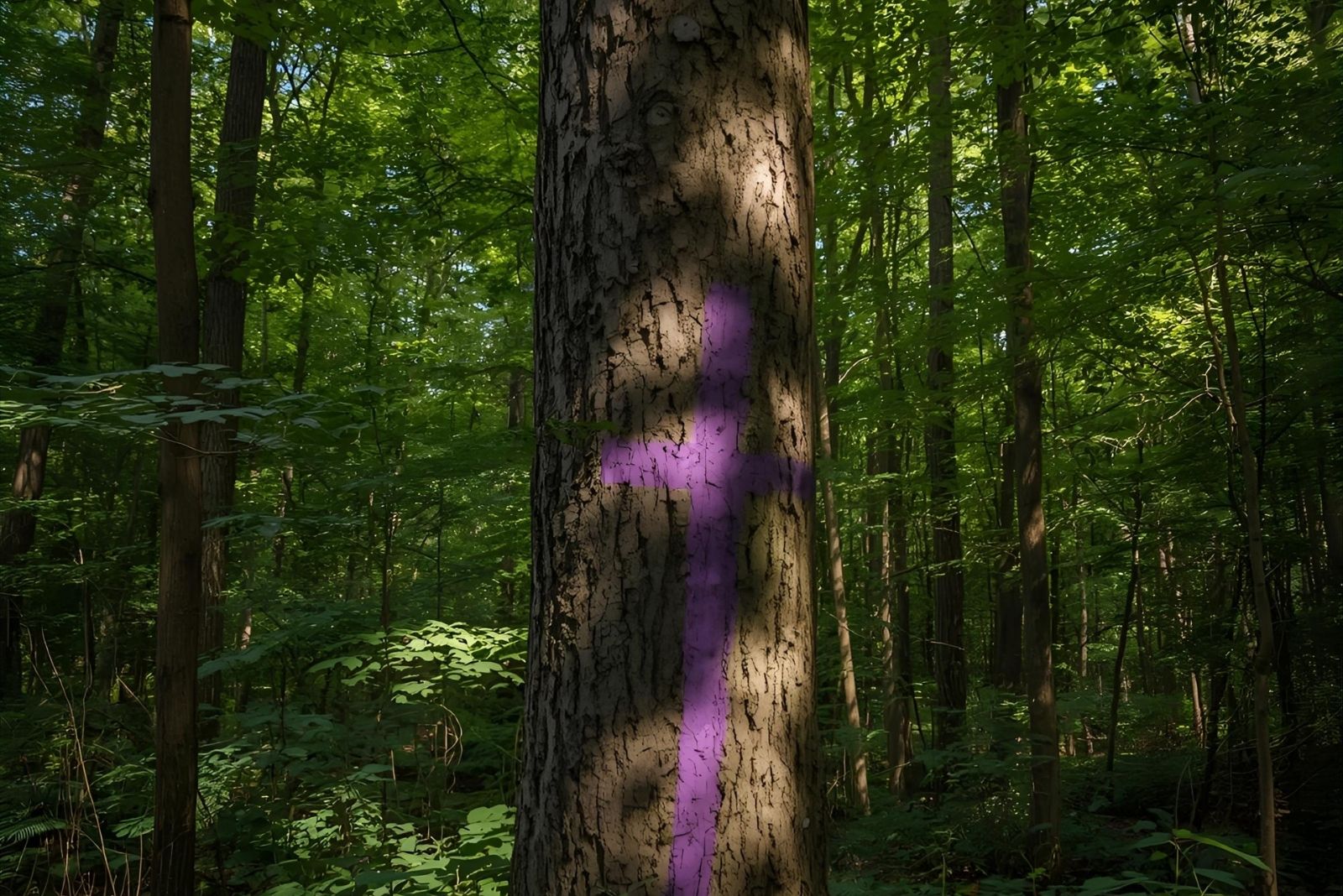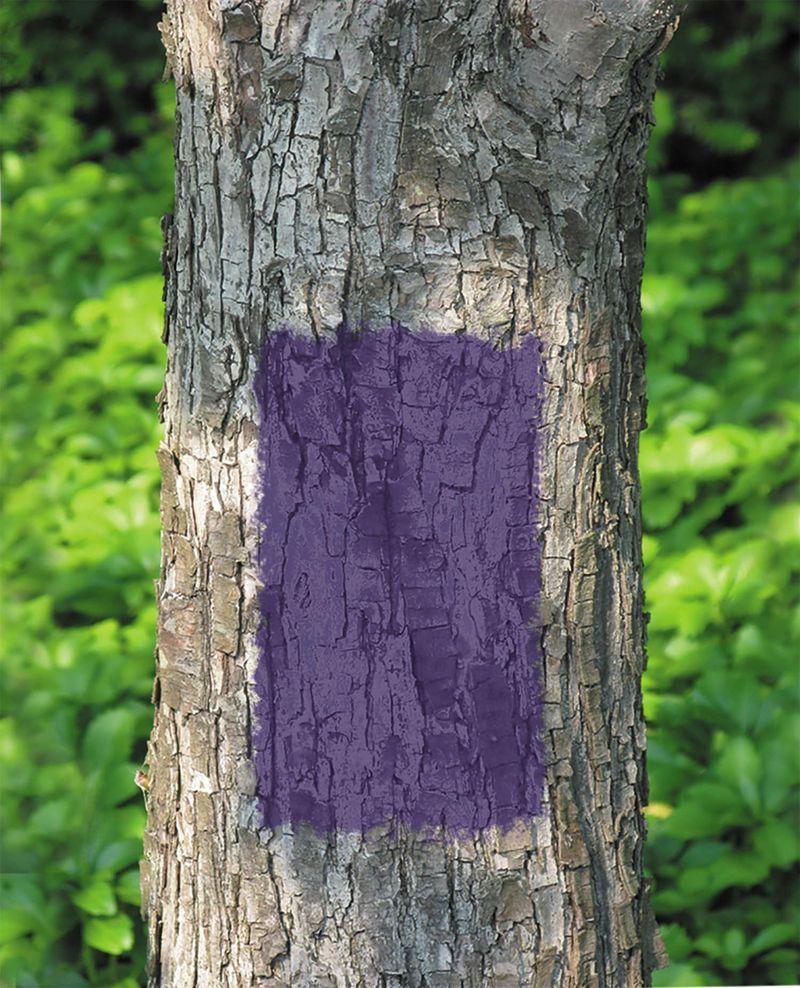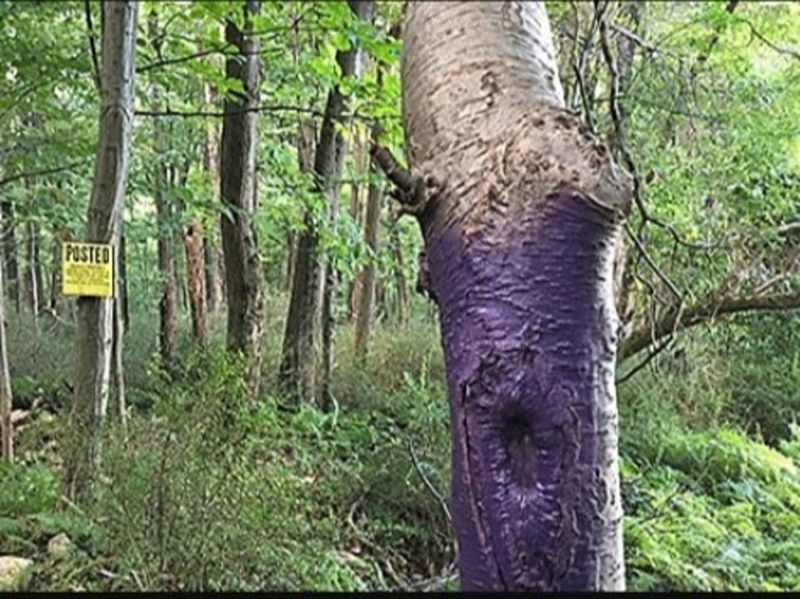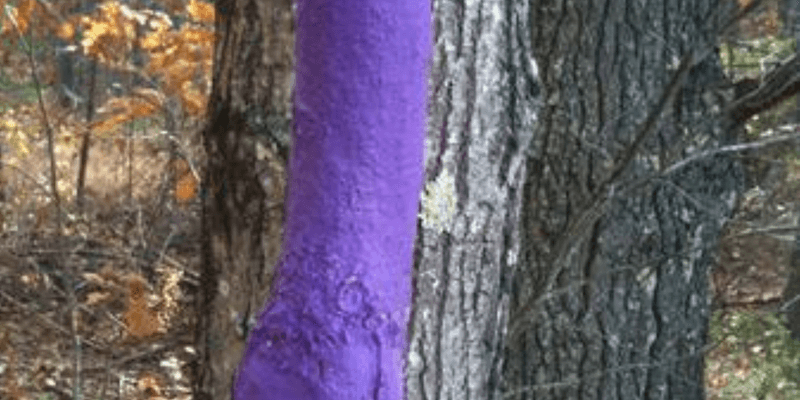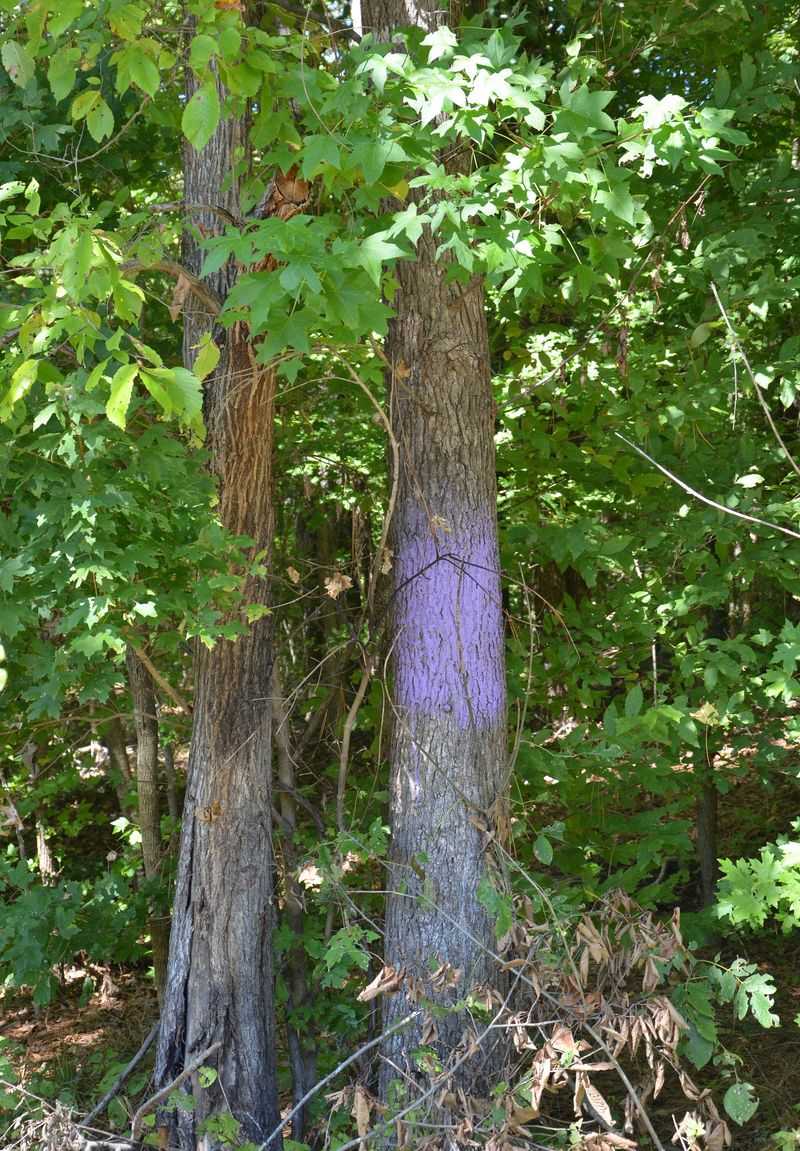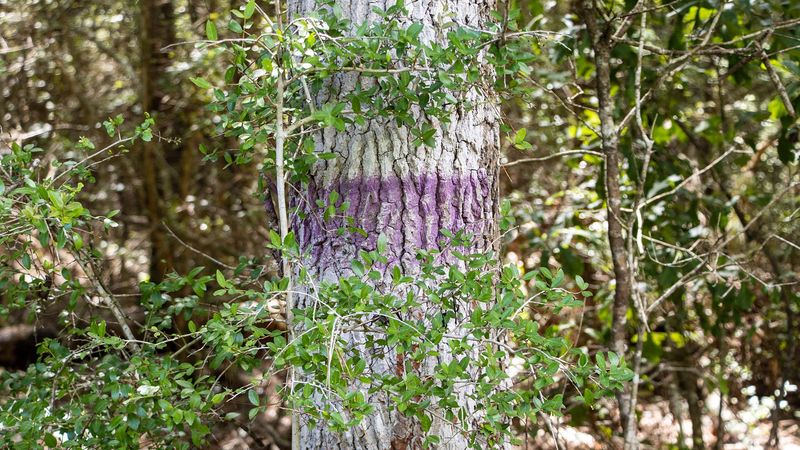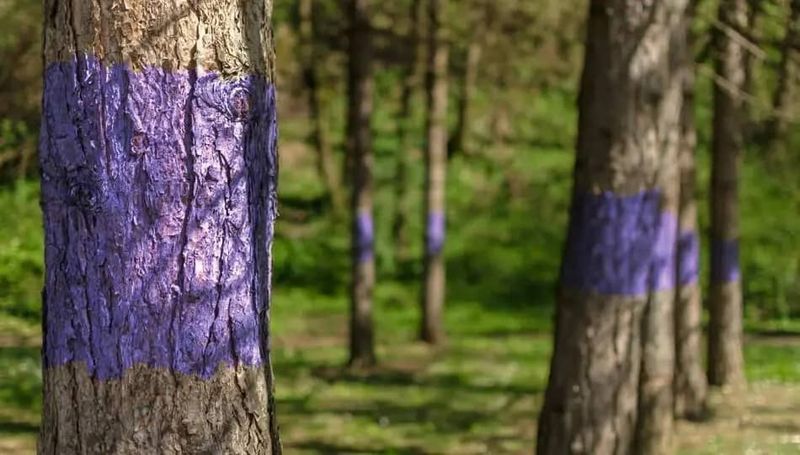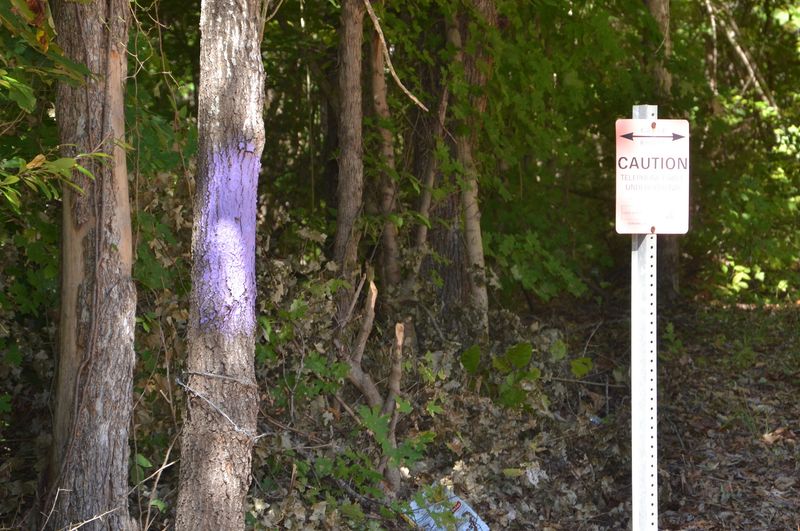If you’ve walked through rural South Carolina, you might have noticed something odd: trees marked with bright purple paint. It’s not random graffiti or some strange art project.
These purple marks actually carry a serious legal message that every hiker, hunter, and nature lover should understand. Let’s explore what these painted trees really mean and why they matter.
1. Legal No Trespassing Warning
Back in 1987, South Carolina passed a law allowing landowners to use purple paint instead of posted signs. For me, this makes total sense because signs get stolen or weather-damaged all the time.
The purple marks serve as official legal notice that you’re entering private property. Property owners paint vertical lines on trees or posts at eye level to mark boundaries.
In my experience, respecting these markers keeps everyone safe and avoids legal trouble for wandering onto someone’s land without permission.
2. Protects Orchards And Crop Trees
Farmers and orchard owners in South Carolina often paint their fruit and nut trees purple to keep trespassers away during harvest season. Pecan groves and peach orchards are especially vulnerable to theft when the crops ripen.
I’ve noticed that one purple stripe does more than a dozen paper signs ever could. It stays visible year-round and doesn’t require constant replacement.
This simple method helps growers protect their livelihood without spending money on fencing or security systems that might not work anyway.
3. Saves Money On Signage
Metal and wooden no trespassing signs cost money, and they don’t last forever. Weather fades them, vandals tear them down, and you’re stuck replacing them constantly.
Purple paint costs just a few dollars and lasts for years without maintenance. Landowners with large wooded properties find this especially practical when they need to mark dozens of boundary trees.
For me, it’s about being smart with resources. Why waste time and money on signs when a simple paint mark does the job better and longer?
4. Marks Timber And Logging Boundaries
Timber companies and private forest owners use purple paint to designate which trees are off-limits to loggers. This prevents accidental cutting of boundary trees or specimens meant for conservation.
I’ve seen how one misunderstood boundary can lead to expensive legal disputes between neighbors. Clear purple marks eliminate confusion about where logging operations should stop.
In South Carolina’s forestry industry, these painted boundaries protect both the landowner’s investment and the logger’s reputation by keeping everything transparent and legally sound.
5. Guides Hunters Away From Restricted Areas
During hunting season, purple painted trees tell hunters they’ve reached the edge of public land or entered a no-hunting zone. This keeps everyone safer and reduces conflicts between landowners and sportsmen.
Many South Carolina properties border state forests or game lands. Without clear markers, hunters can accidentally wander onto private property and create dangerous situations.
In my experience, most hunters respect these boundaries once they understand the system. It’s a simple visual cue that prevents misunderstandings before they start.
6. Protects Rare And Heritage Trees
Some landowners mark ancient oaks, rare species, or historically significant trees with purple paint to discourage trespassing and potential damage. These specimens might be hundreds of years old and irreplaceable.
I’ve noticed that marking the area around heritage trees creates a protective buffer zone. People who might otherwise carve initials or damage bark think twice when they see legal boundary markers.
South Carolina has countless old-growth trees worth preserving. Purple paint offers a low-maintenance way to guard these natural treasures for future generations.
7. Prevents Garden And Landscape Theft
Believe it or not, plant theft is a real problem. Rare shrubs, ornamental trees, and even mature landscaping plants get stolen from rural properties.
Homeowners with wooded lots sometimes paint trees purple near their gardens and landscape beds. It sends a clear message that the entire property is monitored and legally protected.
For me, this feels like a smart preventive measure. One can of purple paint might save you from losing expensive plants or dealing with the hassle of unwanted visitors trampling through your carefully planned garden spaces.

